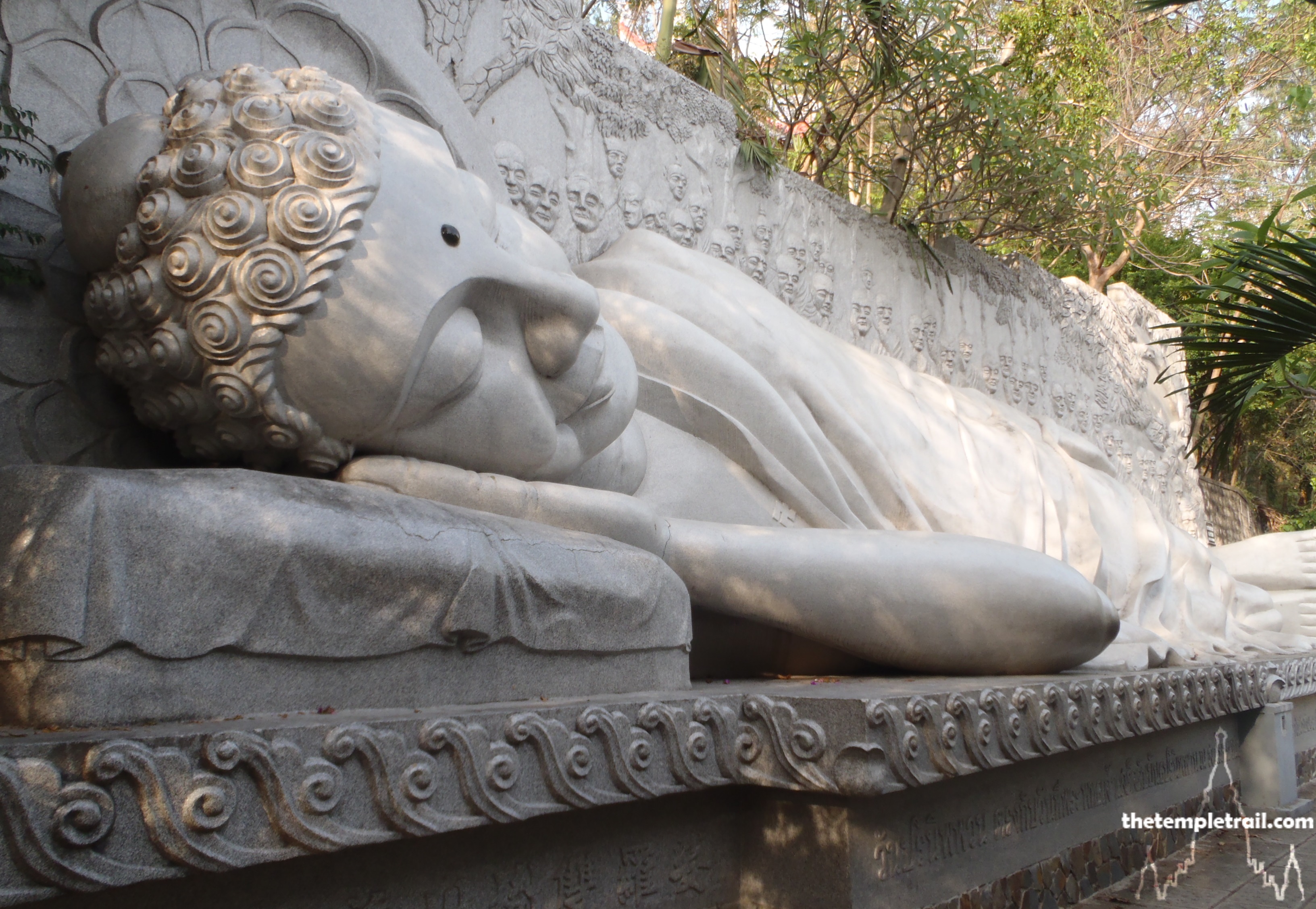Once the largest and most spectacular city on the planet, the former Thai capital of Ayutthaya is now a shadow of its former self. The low-rise concrete buildings that occupy much of the town do little, however, to cover the shades of the city’s glorious past. Brick and laterite spires protrude from the ground and can be found everywhere. Enormously tall prangs (towers) and chedis (stupas) occupy the old centre of the city and spring up in the middle of more modern neighbourhoods. The city has in excess of 420 temples. Even the ruins are a place for reverent worship and adoration. Jumping on the back of a motorbike taxi, you zip through the streets of Ayutthaya. Concrete and brick intermingle as you fly past ancient and modern structures. The driver has no helmet to offer you and the wind rushes through your hair and stings your eyes. Within minutes, buildings give way to vegetation. Bamboo huts replace the more permanent structures as you follow the course of the Chao Phraya River. Soon, you are screaming to a halt and shakily climbing down from the two-wheeled machine. From a flat, green piece of land, a set of beautiful red brick structures reach for the heavens.
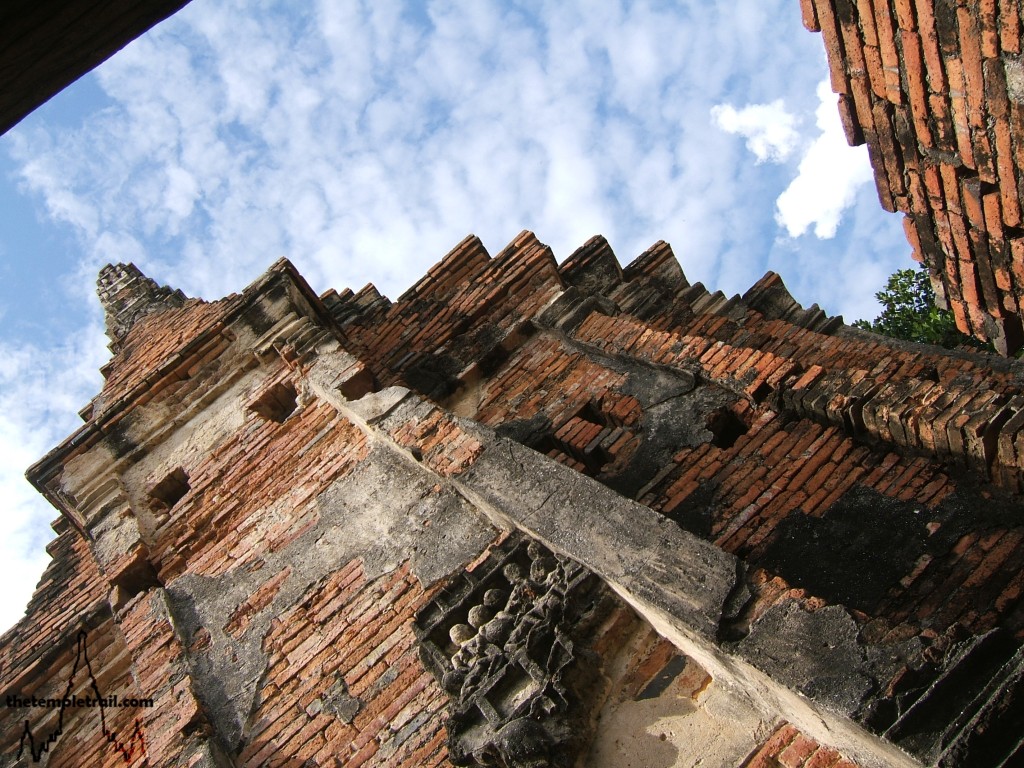
The Royal Monastery of Wat Chai Watthanaram (Temple of the Long Reign and Glorious Era) is a beautiful gem in the crown of Ayutthaya. It loosely resembles Angkor Wat in Cambodia and was built in 1630 by King Prasat Thong at the beginning of his reign in honour of his foster-mother. Stories submit that it rests on the site of her former home. It has been also suggested that he built the temple as a monument to his victory over Angkor or the quelling of riots that ensued from his usurpation of King Athittayawong when he was the Kalahom (Chief Military Minister). Perhaps it is a mixture of all of the above, but the meritorious act of constructing a temple is always a good idea in Thailand.
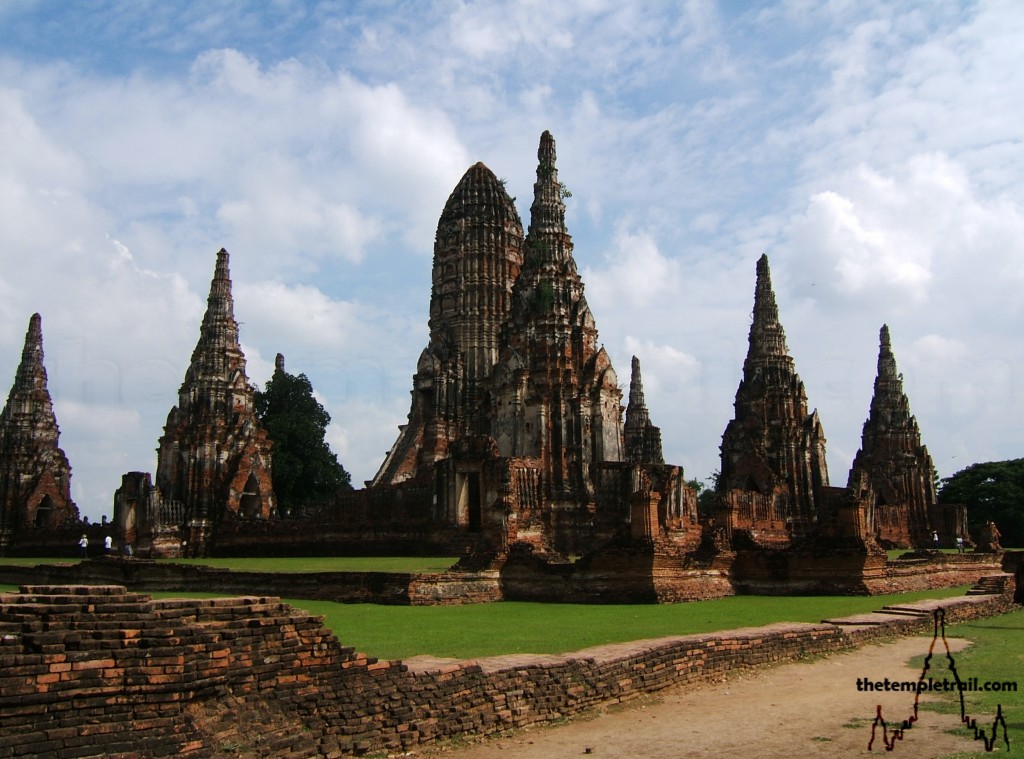
Wat Chai Watthanaram is the first of the Late Ayutthaya Period temples to have been built. It marks the transition back to building prangs after so many years of Sri Lankan-style bell-shaped chedis and the influence of the Sukhothai-style of the north. In fact, the last prang to have been built was 200 years previous to Wat Chai Watthanaram. The idea that Prasat Thong came back with builders and architects from Angkor would possibly help to explain this turnaround in style back to an Early Ayutthaya Period look. A gold tablet found in the complex suggests that the temple was completed in 1649. It served as a place for royal funerals and as a safe-haven from Burmese cannon volleys. The temple suffered much through its history, from the Burmese invasion of 1767, to continual looting for Buddha heads and bricks. It was finally renovated in 1992, and what you see in front of you is the result of five years hard work by the Fine Arts Department.
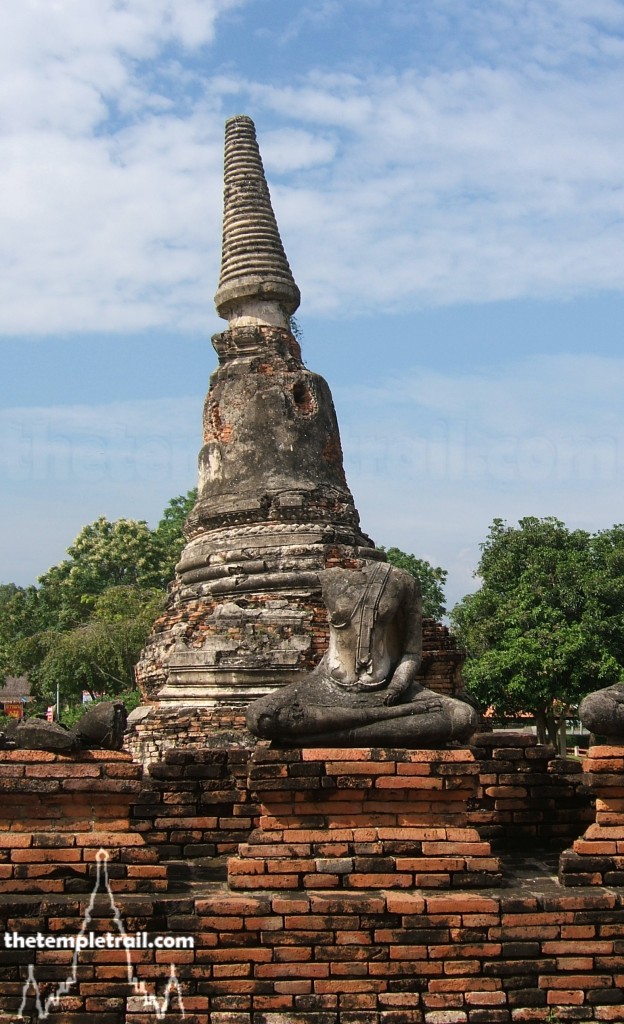
As you approach the temple, you are actually entering through the side, with the river at the front. The waterways of old Siam were the main mode of transportation, the river, although closer than when the temple was built, runs directly in front, so that the Kings would have arrived by royal barge. Regardless of this, you enter as a commoner from the land. Before you is a symphony of towering structures. Much like the Angkorian temple mountains, this set of buildings is designed with a view to creating a heavenly mandala on earth. In the centre, a huge 35-metre-tall prang looms over all of the others. The layout is that of the Trai Phum Phra Ruang (Three Planes of King Ruang); the Thai Buddhist cosmology. The Trai Phum (traibhūmi – three levels) was written by the 14th century ruler Phaya Lithai, the last independent king of Sukhothai. His royal lineage was the Phra Ruang Dynasty, hence the Trai Phum is named after it. His son ruled after him, but under the suzerainty of Ayutthaya.
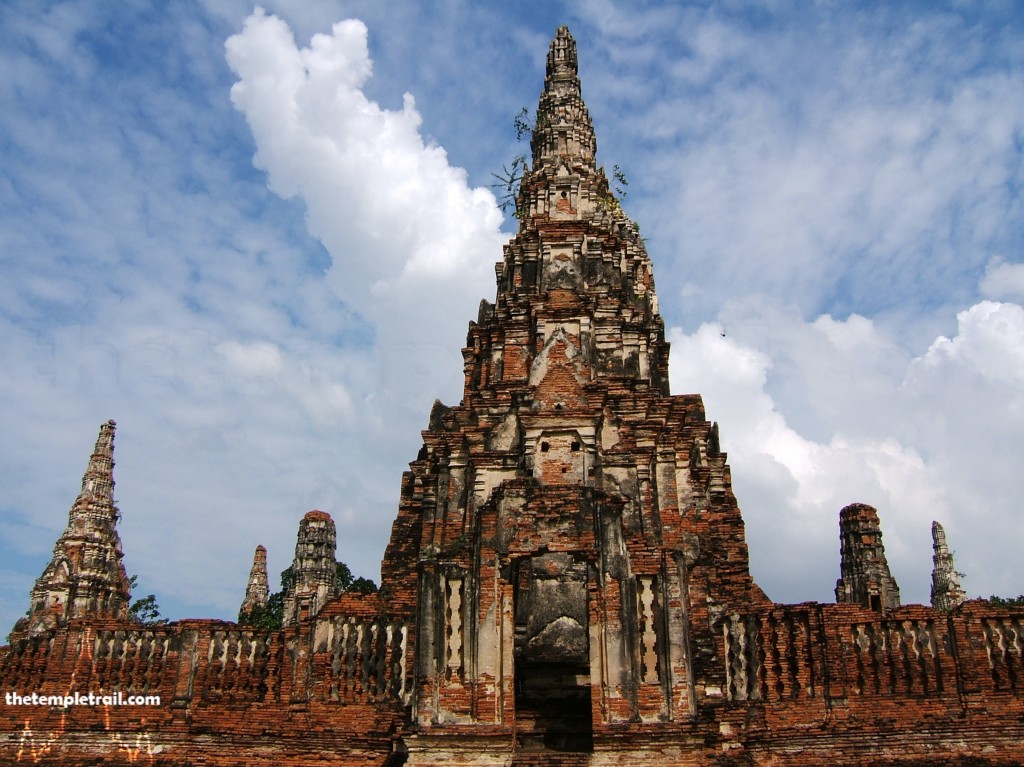
You first cross the Kamphaeng Kaew (crystal wall) that surrounds the whole complex. This wall represents Mount Chakrawan (also called Cakravada meaning Iron-Enclosed), the annular mountain that forms the crystal walls of the world. In the Trai Phum, this is the eighth and final mountain ring that contains the whole universe. The Trai Phum states that the universe is filled with an infinite number of Chakrawans (Cakkavālas – spherical world-systems) that each have a heaven, hell and world of mankind. These world-systems are all identical and each of them are have a central universal peak of Khao Phra Sumen (Phra Meru or Sumeru – abode of the gods) like solar systems in galaxies. Phra Meru is circled by eight rings of ocean that are contained and segregated by the craters of the Satta Boriphan (seven annular mountains). Having passed the eighth, Mount Chakrawan, you look in towards the universe that you are about to explore.
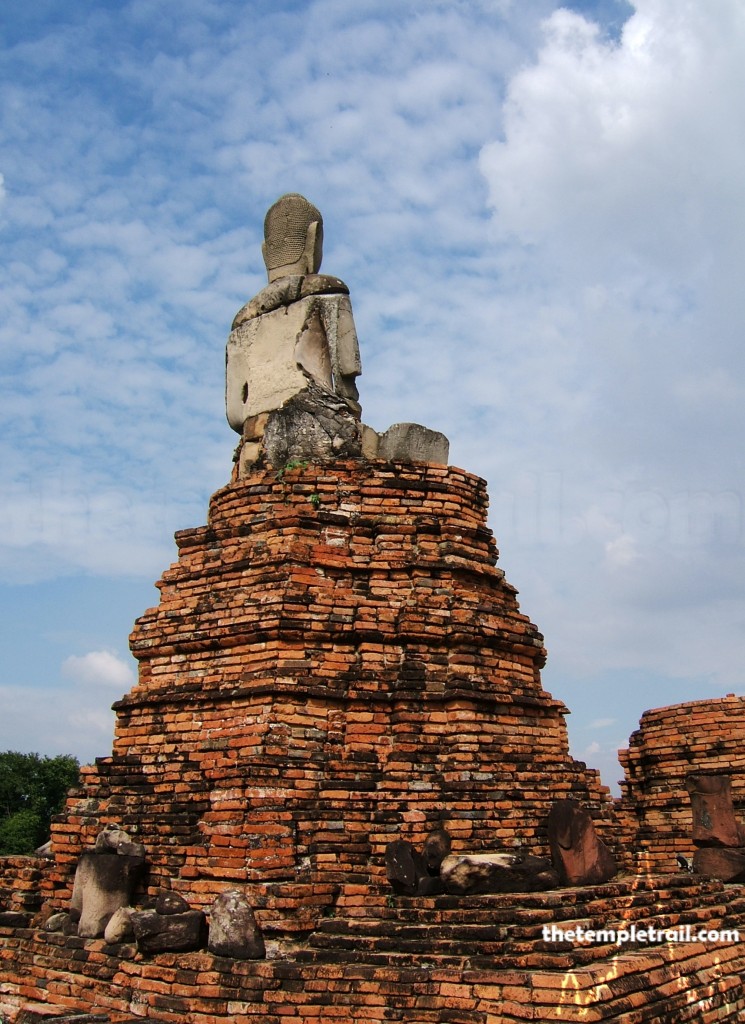
Crossing the inner wall, you make your way around the front and the platform that once held the Phra Ubosot (ordination hall). The ubosot was of Middle Ayutthaya style, with a surrounding porch. Nothing much remains of the building, other than the platform, column bases and reconstructed Buddha images. The sun, rising over the river, would once have crept through the door and lit up the statues in the morning.
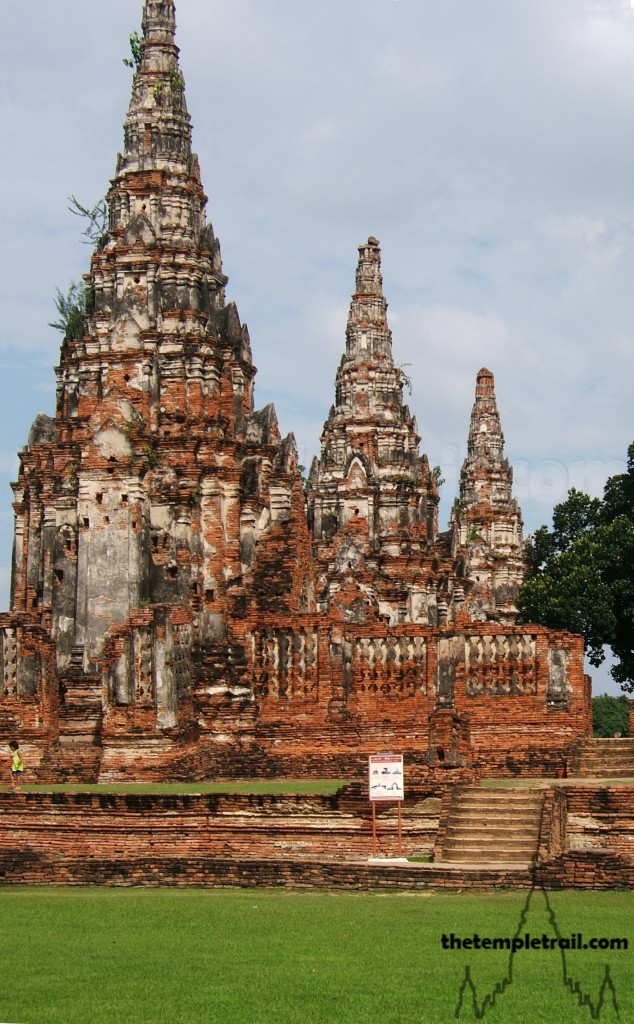
Leaving the ubosot, you move on to the Phra Rabieng (gallery) that surrounds the quincunx (cross-shaped layout of the inner structures). The gallery, that represents the seven annular mountains, is divided by eight ‘meru’ or funeral pyres. The towers are a decorative device that also house Buddha statues (12 in the eight towers). They are so named as they resemble the royal funeral pyres (golden meru) and are in the cardinal and ordinal directions. The meru thit in the corners each house two Buddha statues and the meru rai that intersect the passages have one.
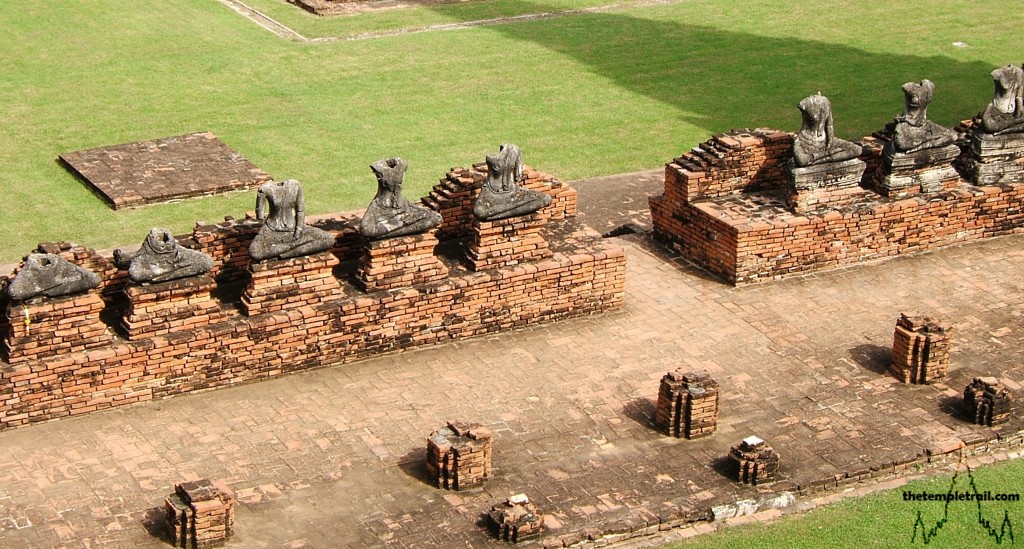
The towers guide you to the eastern of two entrances into the inner compound. Entering the gallery, you circle it, exposed to the sunlight. The cloister would once have been roofed and the false windows built into the outer wall. The openings would have played tricks with light and shadow on the stucco painted with elaborate depictions of the Maha Wetsandon Chadok (Vessantara Jataka tale about the Buddha’s previous life as King Vessantara who gives away everything he owns). The tale remains popular in the Theravada Buddhist nations and would have been viewed here with a clockwise procession. The once glorious gallery is lined with the remains of 108 Buddha statues in the maravijaya (victory over Mara pose), with one hand on the lap and the other touching the earth. These statues were originally gilded and would have added to the play of colours on your eyes. Passing through one of the meru rai, you look up and see the remains of some painted woodwork. The ceilings here were decorated with gold stars on black lacquered wood. From the inside, the 24 metre-tall towers seem like quite small spaces. Their presence from the outside is much more visible and they indicate the funerary function of the site.
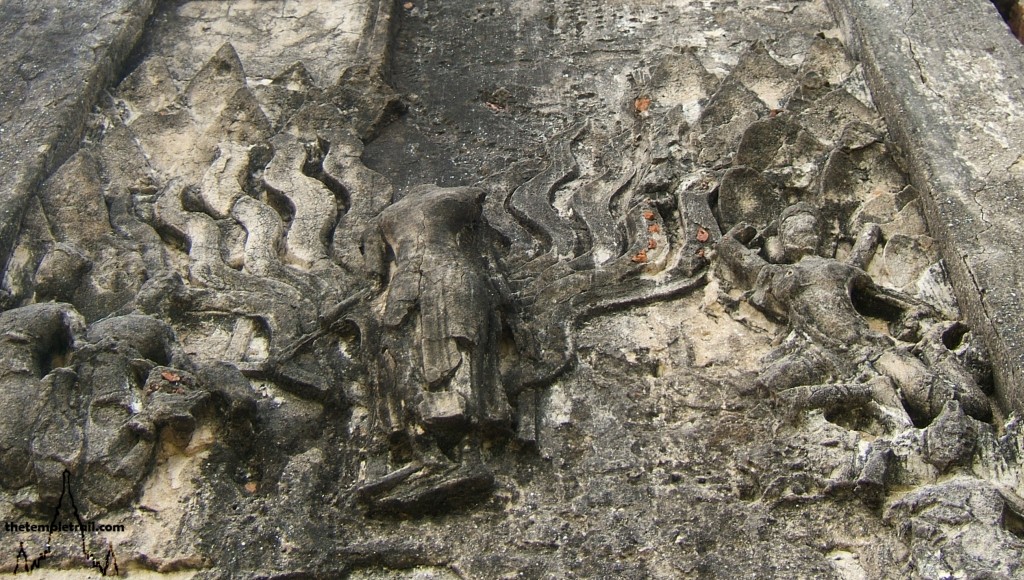
Continuing around the gallery, you see patches of stubborn stucco clinging to the brickwork. Your imagination runs wild as you see figures popping out of the walls. In the centre of the compound is the dominant Phra Prang (main prang) and the surrounding prang thit (satellite prangs). The Phra Prang is a 35 metre-tall focus of adoration. The tower represents Mount Meru in the centre of the Kama Phum world system. This, the very abode of the gods, is the axis around which everything is centred, much like the axis mundi. Around it on the quincunx, are four subordinate prangs. These towers each represent one of the four continents of the Great Ocean. Each continent is made up of a large landmass and 500 smaller islands. The southern continent is Chomphu Thawip (Jambudvīpa), the land of mankind. This is traditionally the Indian Sub-continent. The other continents are occupied by beings that are similar to man.
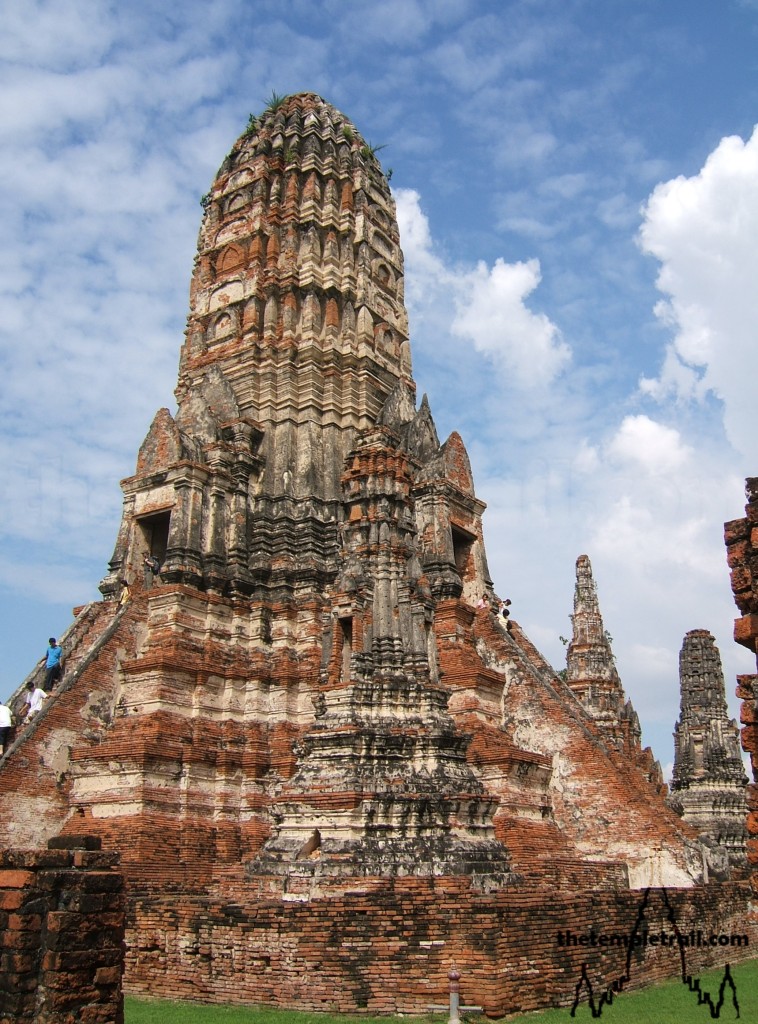
Taking one of the four sets of steep stairs, you begin to climb the Phra Prang. As you climb, the sun blinds you and you feel as if you are ascending into the heavens. Meru is the axis of the universe physically and spiritually. By climbing it, you are gaining insight and divine knowledge. Reaching the top of the staircase you face a niche. This is an example of how the late style differs from the early style. In the Early Ayutthaya Period, there was a more Khmer-style cella (chamber) in the prang. Here it has been replaced with smaller chamber and niches. From your vantage point, you see the layout of the temple and its wonderful symmetry. Aside from a small bell shaped chedi (a later addition), everything you see is perfectly aligned. Around you the smaller prangs line up beautifully with the corner meru and the precision of planning and execution were advanced for the time. Standing here, you imagine that there may be some weight behind the argument that Prasat Thong brought Khmer architects to Ayutthaya. The main prang and its smaller counterparts were originally covered in gold plated tin sheets, so the centre of this masterpiece would have shone brilliantly under the powerful Thai sun.
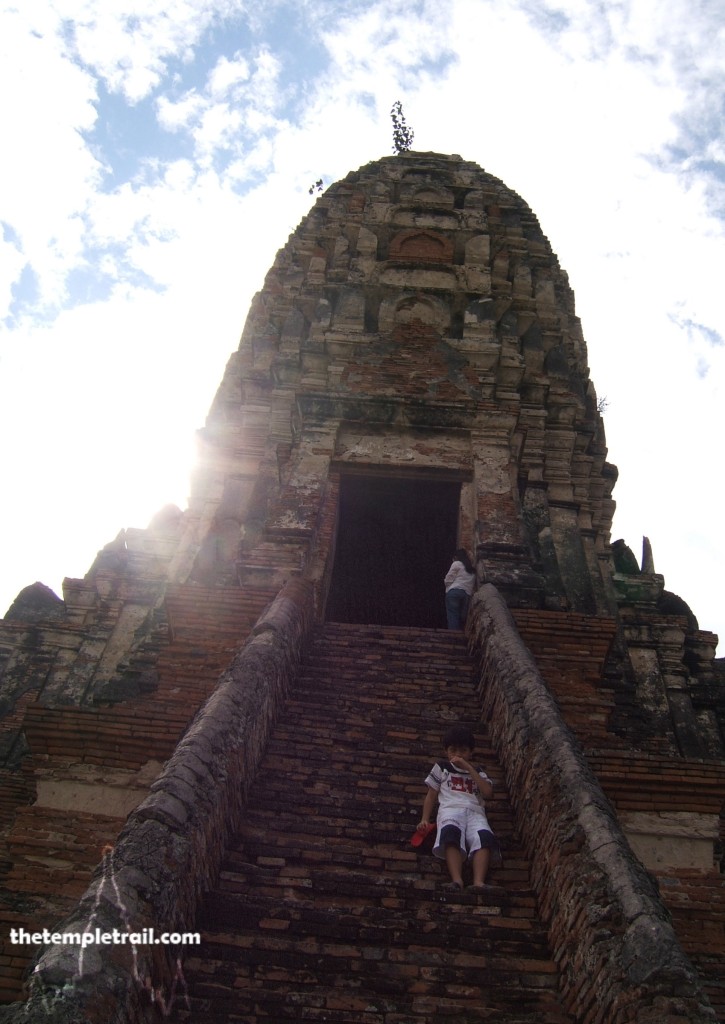
Before climbing back down, you note the two large chedis to the north and south of the ubosot. These chedis both display characteristics of Prasat Thong’s new style. They are a stylized squarer version of the bell chedi and have 12 indented corners. Chedis traditionally house relics or ashes of important people and it is speculated that the remains of the King’s foster-mother may possibly be under at least one of them. The temple was used as a royal temple where the monarch would personally perform rituals. It is the where royal cremations took place and was a memorial to the kings. The late 17th century Dutch traveller Heeck called it the large abbentak (he called Wat Phutthai Sawan the small one). Although this term has no meaning, it may be his version of Phra Banthuek meaning royal memorial. Much of our feeling for Wat Chai Watthanaram comes from the shimmering account of Heeck and it would make sense for this temple to be the main royal temple of Ayutthaya, as many royals were cremated here over the years. This could explain some of the later stupas outside of the outer wall.
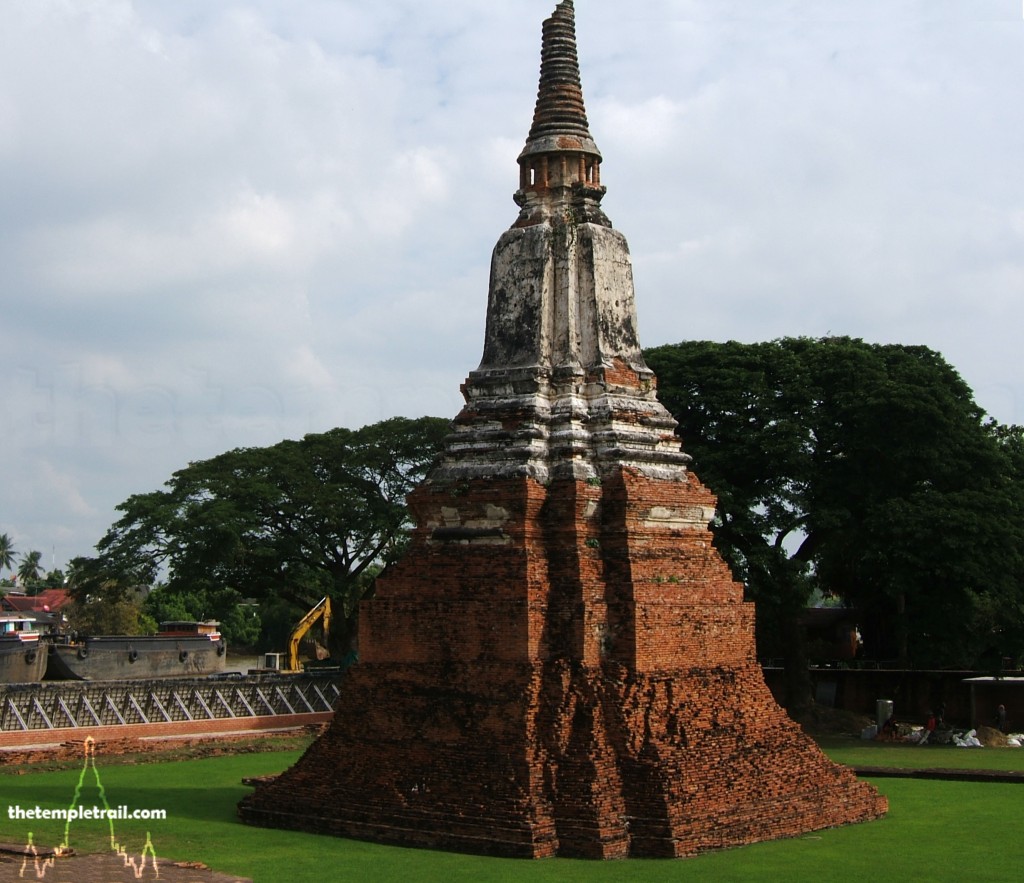
Leaving this microcosmic representation of the universe, you feel like you have gained an insight into the minds of the Siamese at the height of Ayutthaya’s power. In doing so, you also gained some knowledge of the modern Thais. As you mull this new found information over, you hail another motorbike taxi driver over. Getting on the well-worn Japanese machine, you wonder whether this enlightenment will aid you on your journey back into town. You do not have too much time to think about it, for within seconds of stating your destination to your driver, you are tearing down the street straining to keep hold of the bike.
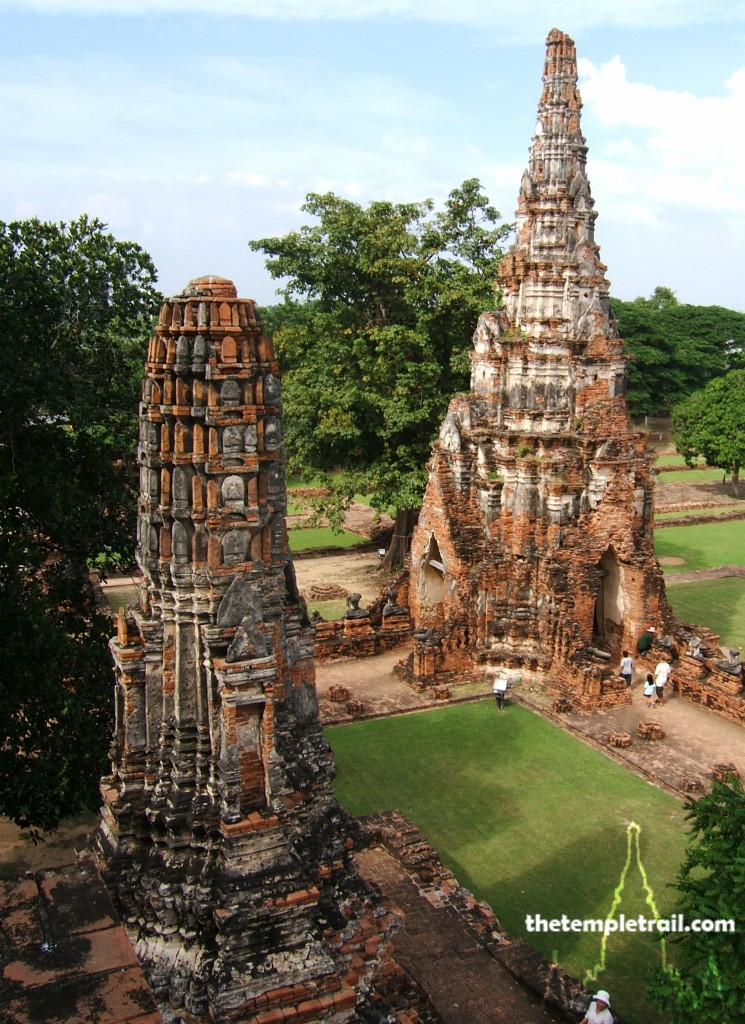
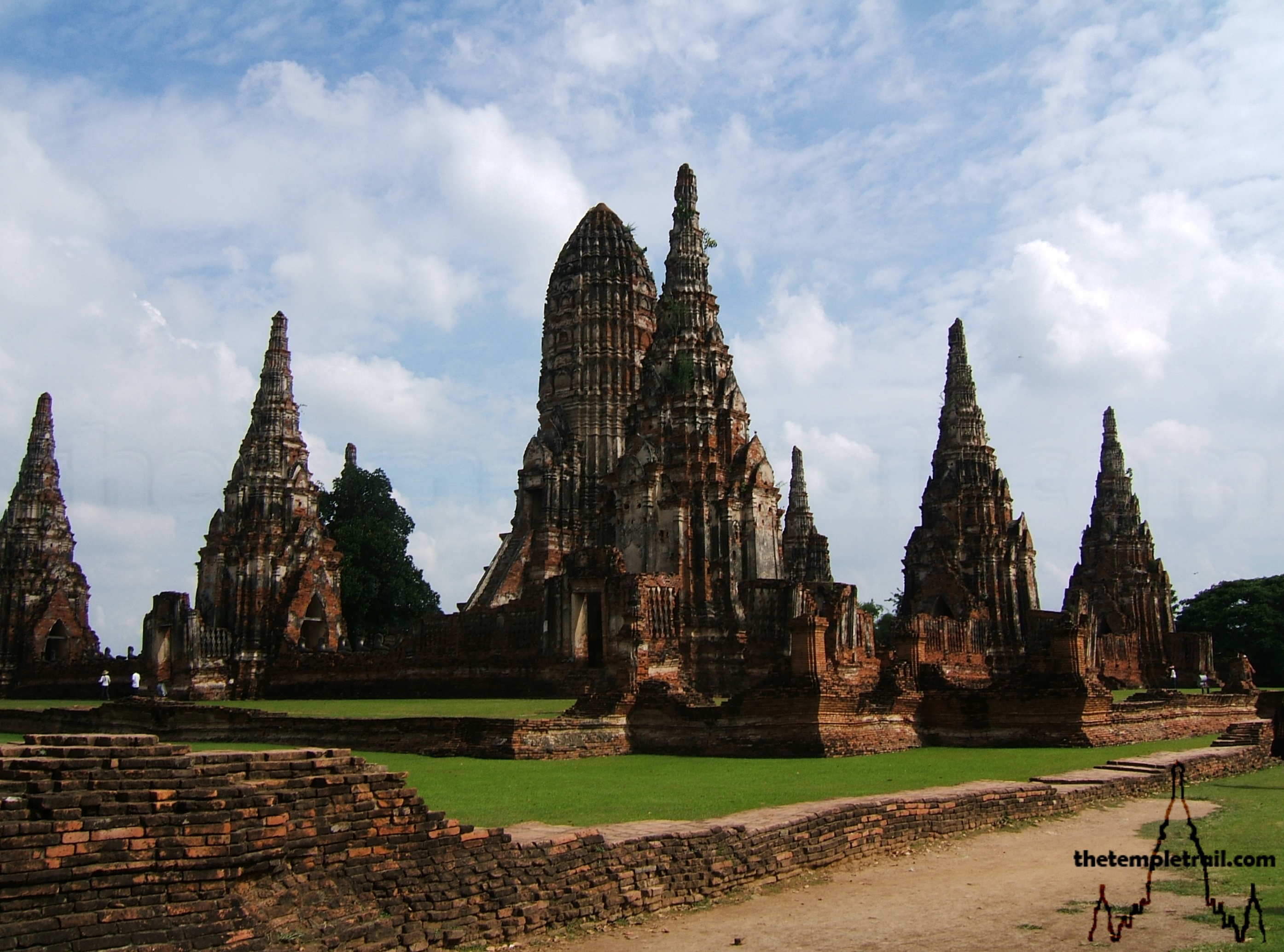
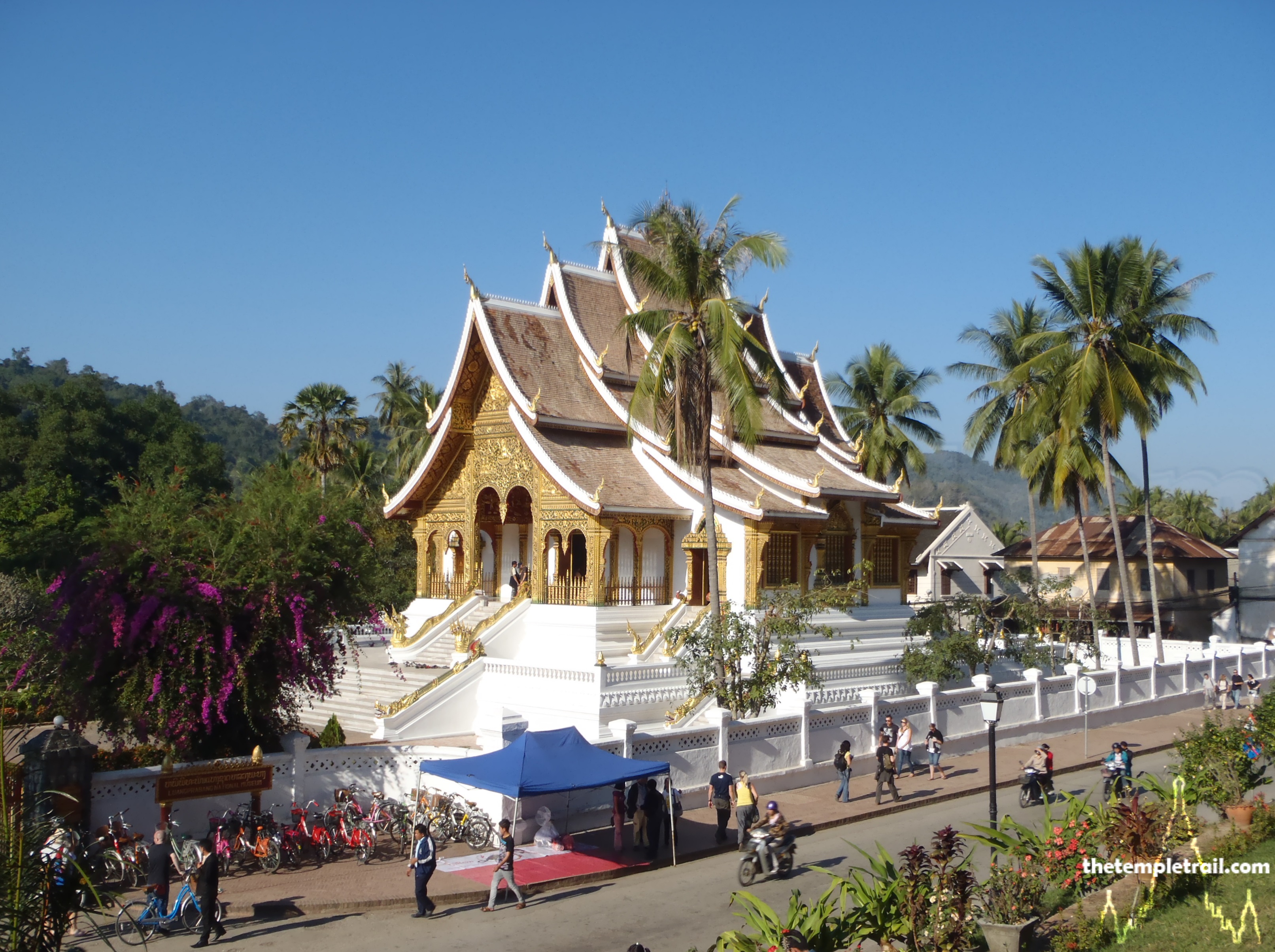 Phou Si
Phou Si